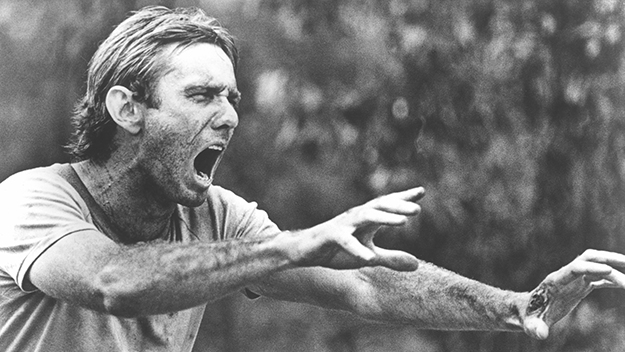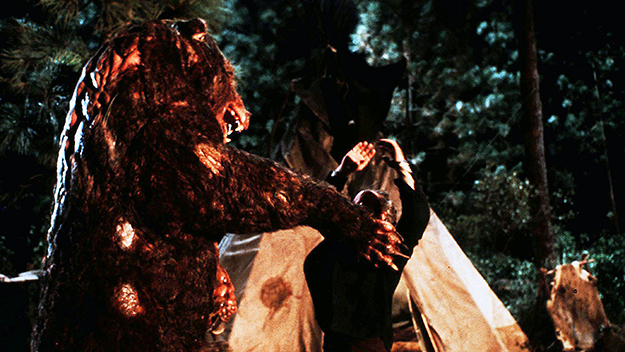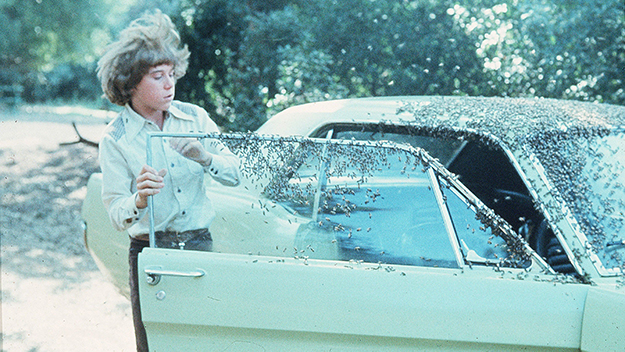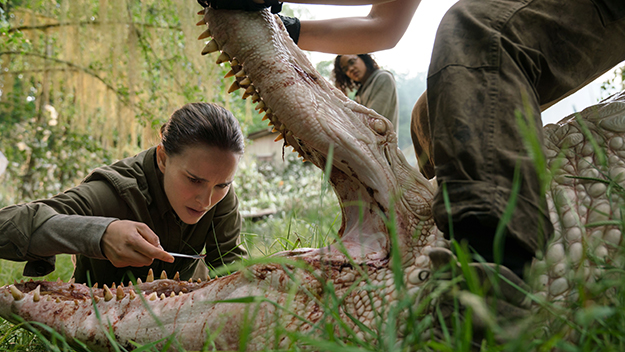Classified: Eco-Horror
Classified is a regular column on genre by April Wolfe.

John Hargreaves in Long Weekend (Colin Eggleston, 1978)
In 1972, the world’s first Green Party was formed in Tasmania in response to two major Australian dam projects. At the same time, Coca-Cola was shifting the blame for littering and environmental degradation from waste product to Aussie consumers, shuttering their sustainable bottle-refilling plants. Land-use issues, nuclear testing, species extinction, all of it was coming to a head in the 1970s, leading Everette De Roche to write one of the more damning eco-horror films ever made, Long Weekend (1978), in which nature is both the villain and the hero, having endured human cruelties for far too long.
Directed by Colin Eggleston, Long Weekend and its story of animal uprising was not particularly well-received upon its release. De Roche (speaking to Cinema Papers in 1980) attributed this to the way nature and its creatures are developed in the film: “the bush [i.e., untamed nature] comes across as a threat too early; it should have emerged as a threat only after the audience had sympathized with the animals. And I don’t think that sympathy is there.” Watching the film in 2019, however, it’s impossible not to be on the animals’ side from the very beginning, as Peter (John Hargreaves) and Marcia (Briony Behets) quarrel their way into an ill-advised camping holiday at the beach. Marcia begs Peter to take them home; he shoots at every animal he sees just for the bloody fun of it. They leave their plastic packaging strewn about, cut down trees just because, and all the while there is the feeling that something sinister lurks in the forest and water, gradually being pushed to a breaking point when the humans must be punished.
That obviously wasn’t the first time cinema had depicted nature and animals as brute force equalizers and death dealers. Alfred Hitchcock’s The Birds is a far better-known example, but Long Weekend had the gall to make its lead characters utterly unlikable and to suggest that perhaps this was the justice and fate they deserved. (Hitchcock leaves the morality of nature buried in the subtext.) Proffering that we are the problem so blatantly is more a construct of the late 1970s and early 1980s. Theatrical releases and B-movies of the era—such as Saul Bass’s one and only feature film Phase IV, and Day of the Animals, Roar, and Of Unknown Origin—explore similar themes. Japanese filmmakers got into the act as well; Godzilla vs. The Smog Monster features everyone’s favorite kaiju battling a monster born from pollution. That film was released as a double feature in the U.S., alongside George McGowan’s Frogs, in which Sam Elliott’s character warns a wealthy patriarch to call off his Fourth of July celebrations because the animals he’s killing with pesticides are about to fight back.

Prophecy (John Frankenheimer, 1979)
Eco-horror wasn’t just relegated to the B-movies at that time, either. In 1979, a year after Long Weekend, David Seltzer penned John Frankenheimer’s Prophecy, fresh off the success of The Omen, which had gone a long way in legitimizing horror of the time. In Prophecy, the EPA is dispatched to investigate a feud between an indigenous tribe and a logging operation, finding anti-fungal mercury deposits in the land and water as well as severely mutated animals. Humans are once again pitted against nature, but this time nature’s avatar for the fight is a vicious, mutated mother bear ripping its way through body after body. The film has its issues—namely, a white savior trope and caricatures of natives (who are savagely shredded)—but Prophecy doesn’t excuse its humans from their wrongdoing. Just as in Long Weekend, they get what’s coming to them. But Prophecy was seen by many as falling well below the highbrow expectations of the writer of The Omen. It had a more than modest pull at the box office, but some critics were wary of the eco-horror message. Gary Arnold of the Washington Post called the film “essentially an indoctrination course in liberal guilt.” (One can only imagine how Arnold would have received Avatar.)
Of course, not all of cinema was on board with nature’s righteousness: Irwin Allen’s The Swarm (1978), for instance, depicts its humans as oblivious victims of killer bees who attack without reason. However, in mass-hive-failure 2019, that reason does seem quite clear, even if the characters in the film don’t know it. The Swarm does bring up the question of where eco-horror ends and where disaster begins. Without the overt guilt of humans and the clear retribution of nature, The Swarm doesn’t quite qualify as eco-horror, even if most of the other elements are present. There’s certainly a case to be made that all of Allen’s disaster movies are some type of eco-horror, just told from the wrong perspectives, i.e. oblivious humans.

The Swarm (Irwin Allen, 1978)
In the 1990s, eco-horror came back, and it went four-quadrant. Jurassic Park dominated with a story that focused more specifically on the fear of technology altering and unleashing the natural world. Later came Bong Joon-ho’s 2006 monster classic The Host, a cautionary tale about Big Government polluting water with little concern for the consequences. But in the aughts and beyond, there seems a slight tilt in environmental genre filmmaking: what if we just accept and even welcome the total catastrophic destruction of human life as we know it?
Yes, there are still films like Barry Levinson’s The Bay (2012), a found-footage piece following the devastating consequences water toxicity that turns humans into hosts for terrible parasites. And then 47 Meters Down or The Shallows, both fun, taut thrillers of the animal-exploitation variety that depict sharks as kill machines. But films such as those still seem like relics when looking at something like Colm McCarthy’s The Girl With All the Gifts (2016), about a mutated girl who possesses the rare ability to act both human and undead, offering a new path forward for humanity. In the film, the carriers are spores, and people begin to act strangely because of a fungal infection. At a time when doctors are frantically warning people that we are about to be plagued by drug-resistant fungus, the film contemplates what might happen if we let nature take its course and then simply adapted to it.

Natalie Portman in Annihilation (Alex Garland,2018)
That attitude is also pervasive in Alex Garland’s Annihilation (2018), where teams of scientists disappear into a technicolor coastline in search of an indefinable enemy, crashed to Earth on an asteroid. There’s no “villain.” There is only the natural world folding in on itself — like the nightmarish bear who, through some kind of radiation process, enmeshes with the human it’s recently fed on to form an entirely new creature. The characters eventually realize there is only one choice: succumb to the mutation and accept it — those who fight it meet a more gruesome end.
Nearly five decades since the establishment of an environmental movement, and with the term “climate change” already replaced with the more apt and terrifying “climate crisis,” nature is due for its comeback, in the movies at least. What used to be future-thinking dystopian science fiction is now a clear and present danger. HBO’s capitalized on our penchant fascination of all-consuming meltdowns with Chernobyl, and Alexandre Aja’s Crawl combines both climate-change disasters and big, hungry animals by having a murderous gator on the loose during a Category 5 hurricane. With younger audiences leading the way on environmental causes—and experts reporting a seriously alarming uptick in “deaths of despair” in Millennials, while jokes touting “Giant Meteor” as the leading 2020 presidential candidate dominate social media—it’s likely more eco-horror will be entering the theaters.
In De Roche’s original script for Long Weekend, there was a benevolent moment with the animals, wherein they offered the humans one final chance to repent before realizing it was a lost cause and letting man kill man to be done with it. De Roche thought it would have been poetic. Today, nature in the movies, as in real life, won’t show mercy.
April Wolfe is formerly lead critic for LA Weekly. She currently hosts the Switchblade Sisters podcast, and has written for The Village Voice, AV Club, the Washington Post, and The Wrap.







